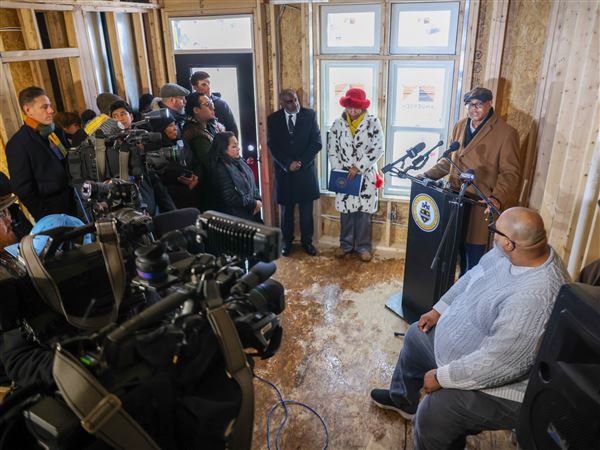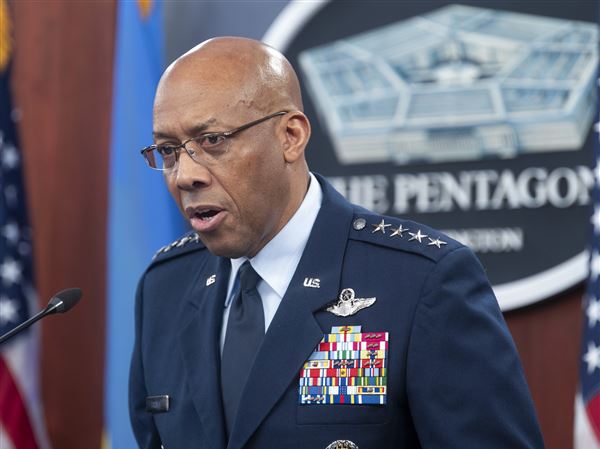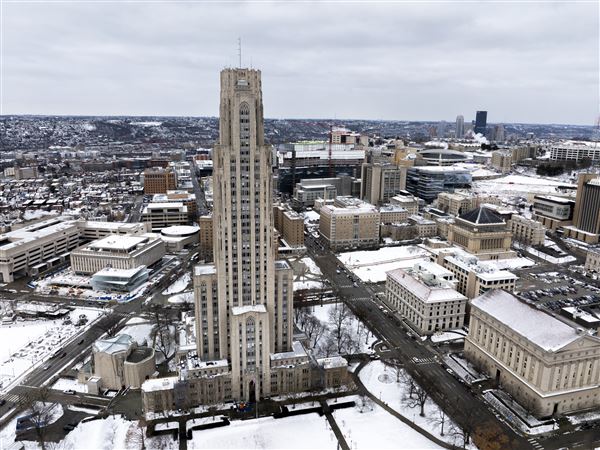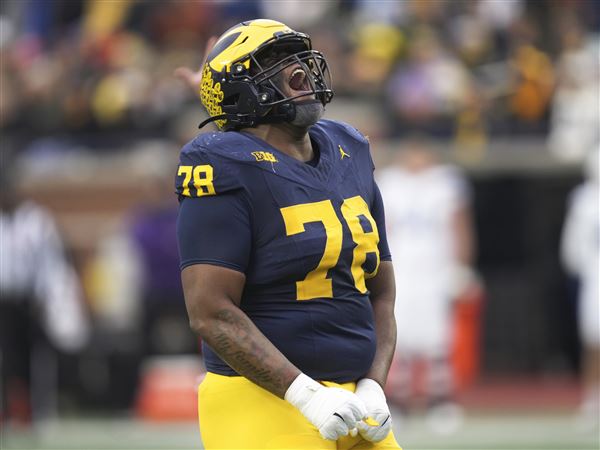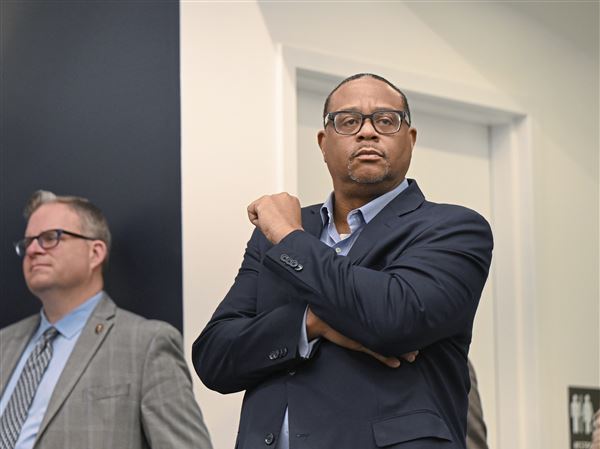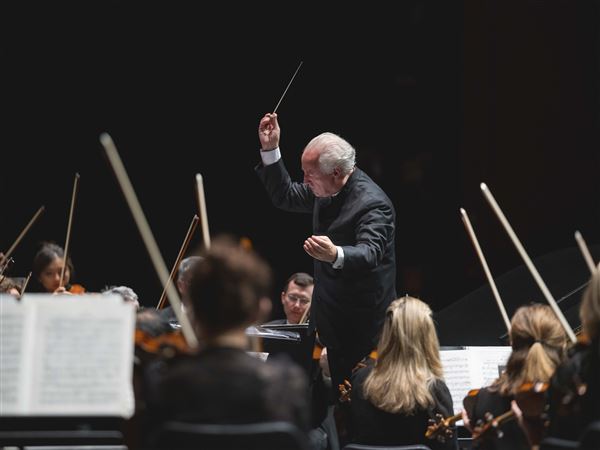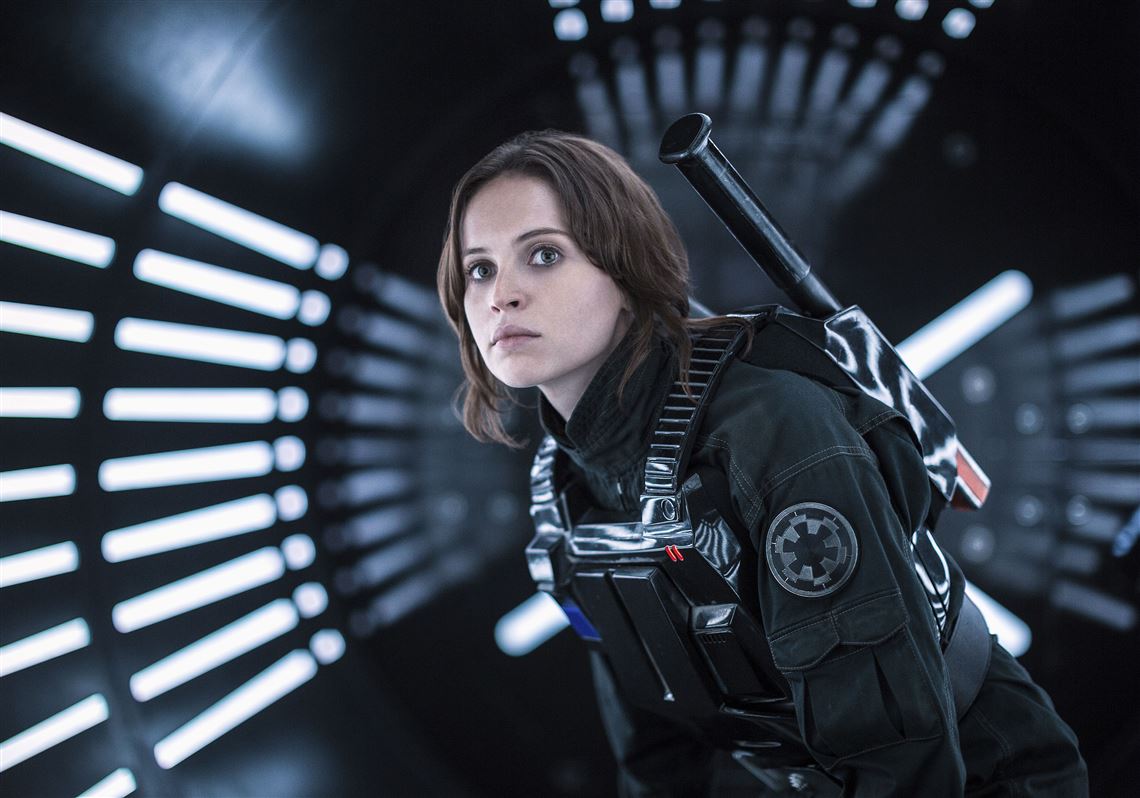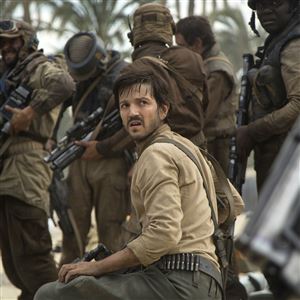There’s a lot of talking in “Rogue One: A Star Wars Story,” but there’s also a lot more action, creeping dread and a sense of mortality among the characters that’s new to the 40-year-old franchise.
Starring: Felicity Jones, Forest Whitaker.
Rating: PG-13 for sci-fi violence, interstellar mayhem.
In kicking off the first “Star Wars” installment that doesn’t revolve around the original heroes, villains and their various iterations through time, director Gareth Edwards has introduced a wilder, darker take on a familiar galaxy “long ago and far away.”
“Rogue One” is the tale of Jyn Erso (Felicity Jones), a thief and a loner who, as a child, watched her mother murdered by Orson Krennic (Ben Mendelsohn) and her father, scientist Galen Erso (Mads Mikkelsen) taken into custody by the Empire.
Galen is pressed into service to create the doomsday weapon that will become known as the Death Star, a planet-killing technology that was introduced in “Star Wars Episode IV: A New Hope” in 1977, the franchise’s first installment.
Jyn, who was a young girl at the time of her father’s capture escaped. She soon found herself under the protection and tutelage of a truly strange and paranoid rebel leader named Saw Gerrera (Forest Whitaker).
We meet Jyn years after Saw Gerrera mysteriously left her on her own to scavenge and thieve her way to subsistence, an act of tough love that forces her to become a more resourceful person in the long run.
After she has been taken into custody for some crime, Jyn is sprung from the Galactic Empire’s clutches by rebels who believe she can bring Saw Gerrera into the effort to stop the Empire’s version of Manifest Destiny.
We are soon introduced to mission leader Cassian Andor (Diego Luna), the blind martial arts master Chirrut Imwe (Donnie Yen), gun-toting bruiser Baze Malbus (Wen Jiang), pilot defector Bodhi Rook (Riz Ahmed) and reprogrammed Empire droid K-2SO (voiced by Alan Tudyk).
Jyn learns that her father built the Death Star under duress, but constructed a secret back door into the killing machine that makes it vulnerable to attack. Jyn and her comrades have to steal the Death Star’s blueprints if the rebellion is to have any hope for ultimate success.
“Rogue One” is essentially the story of how the plans for the Death Star eventually landed in rebel leader Princess Leia’s hands before it was programmed into R2D2 for retrieval by Luke Skywalker in the climax of “A New Hope.”
To say much beyond this is to reveal too much about a film some people are already calling the only true rival to “Star Wars Episode V: The Empire Strikes Back” in the canon to come along in four decades. “Rogue One” has a richer look and more morally complex feel than previous installments.
The first third of the film, especially the exterior scene where Galen is confronted by representatives of the Empire, is framed in a way that is reminiscent of Swedish art films. It is the kind of gorgeous shot we’re not used to seeing in films that prefer a more comic book-like aesthetic.
Still, there's a '70s-throwback feel to the control panels of the X-wing fighters. They look like old video games, which makes me think the director did it on purpose. The kitschiness of the fight scenes doesn't detract from the film's generally impressive cinematography.
The screenplay by Chris Weitz and Tony Gilroy has a nice contemporary resonance at times. The movie manages to be a celebration of diversity and a testament to the power of righteous struggle even when the powers-that-be have all the power and resources. Jyn's speech to rouse the passion of the rebels for fighting despite impossible odds is one of the film's best sequences. For those still smarting from the result of last month’s election, it generates a bit of hope and perspective.
Old-school fans won’t feel left out in the cold by the big focus on new characters. There are important old-school cameos in this film and a substantive role played by a certain black-attired villain that provides a nice link to “A New Hope.”
There’s also a major twist that will send old fans squealing with delight to the internet to speculate about how technology was able to pull off that bit of cinematic legerdemain with two beloved characters — one evil and one good.
As intriguing as “Rogue One” is most of the time, there are a few stretches in the middle and near the end with a bit too much exposition and too many explosions for my taste.
You might think it would be impossible for the mind to wander during crucial scenes involving dog fights in space, but it can when the action becomes undifferentiated thanks to the mind-numbing tyranny of special effects.
“Rogue One” is at its best when it explores the relationship between the characters at ground level. They are a scrappy lot with a lot of heart. I love the fact that the Droid K-2SO is basically unlikable and probably won’t become a hit toy at Christmas because of his bad attitude. He’s bad, but he’s not Jar-Jar Binks bad. Still, it is an example of Disney very consciously leaving money on the table for once.
Tony Norman: tnorman@post-gazette.com or 412-263-1631. Twitter @TonyNormanPG.
First Published: December 15, 2016, 5:00 a.m.
